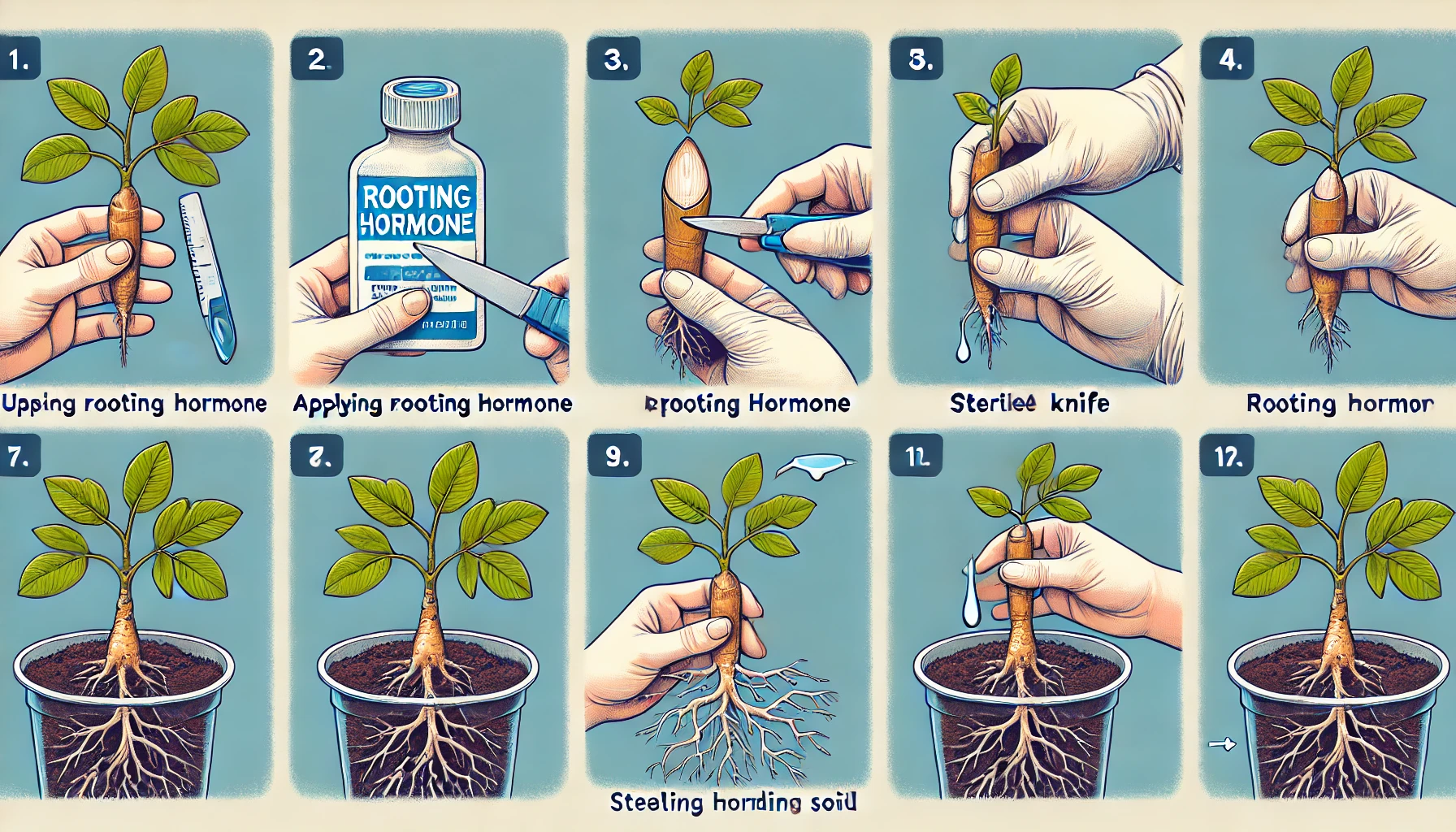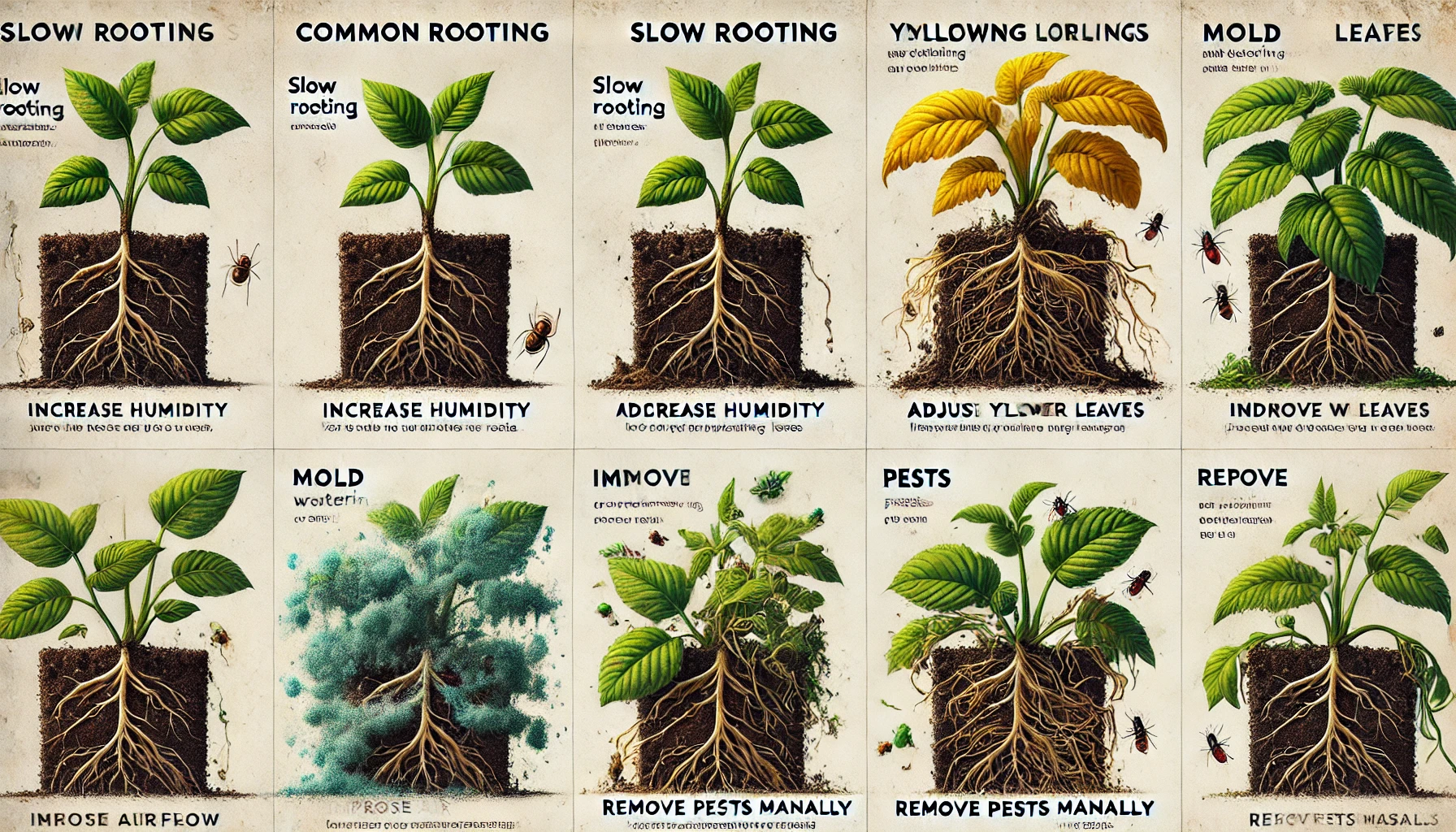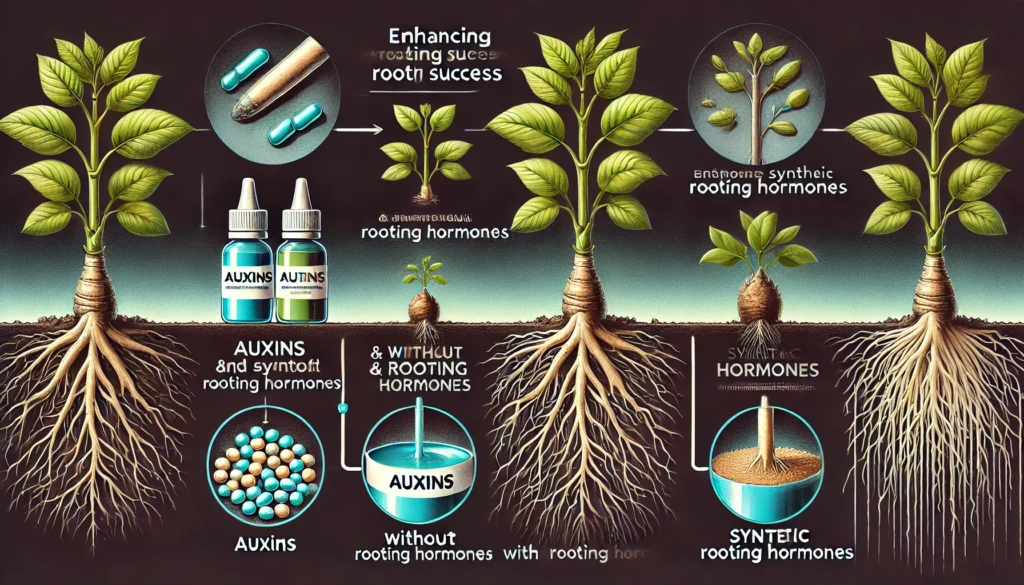
Auxins and Rooting Hormone Usage: How to Boost Root Growth Effectively
Are you struggling to get your plant cuttings to root or looking to speed up the process? Understanding auxins and rooting hormone usage can make a significant difference in your plant propagation success. These powerful tools can enhance root development, helping you achieve healthier, faster-growing plants. In this guide, we’ll explore how auxins and rooting hormones work, why they’re essential for effective rooting, and how you can use them to give your plants the best start possible. Whether you’re a seasoned gardener or a beginner, mastering these techniques will unlock the secret to successful plant propagation. Let’s dive in!
Table of Contents
ToggleWhat Are Auxins and Rooting Hormones?
Auxins are naturally occurring plant hormones that play a critical role in plant growth, especially when it comes to root development. Found in the tips of growing shoots, auxins help cells elongate and promote the formation of roots at the base of a cutting. When you propagate plants, including vining plants, auxins are essential for encouraging healthy root growth.
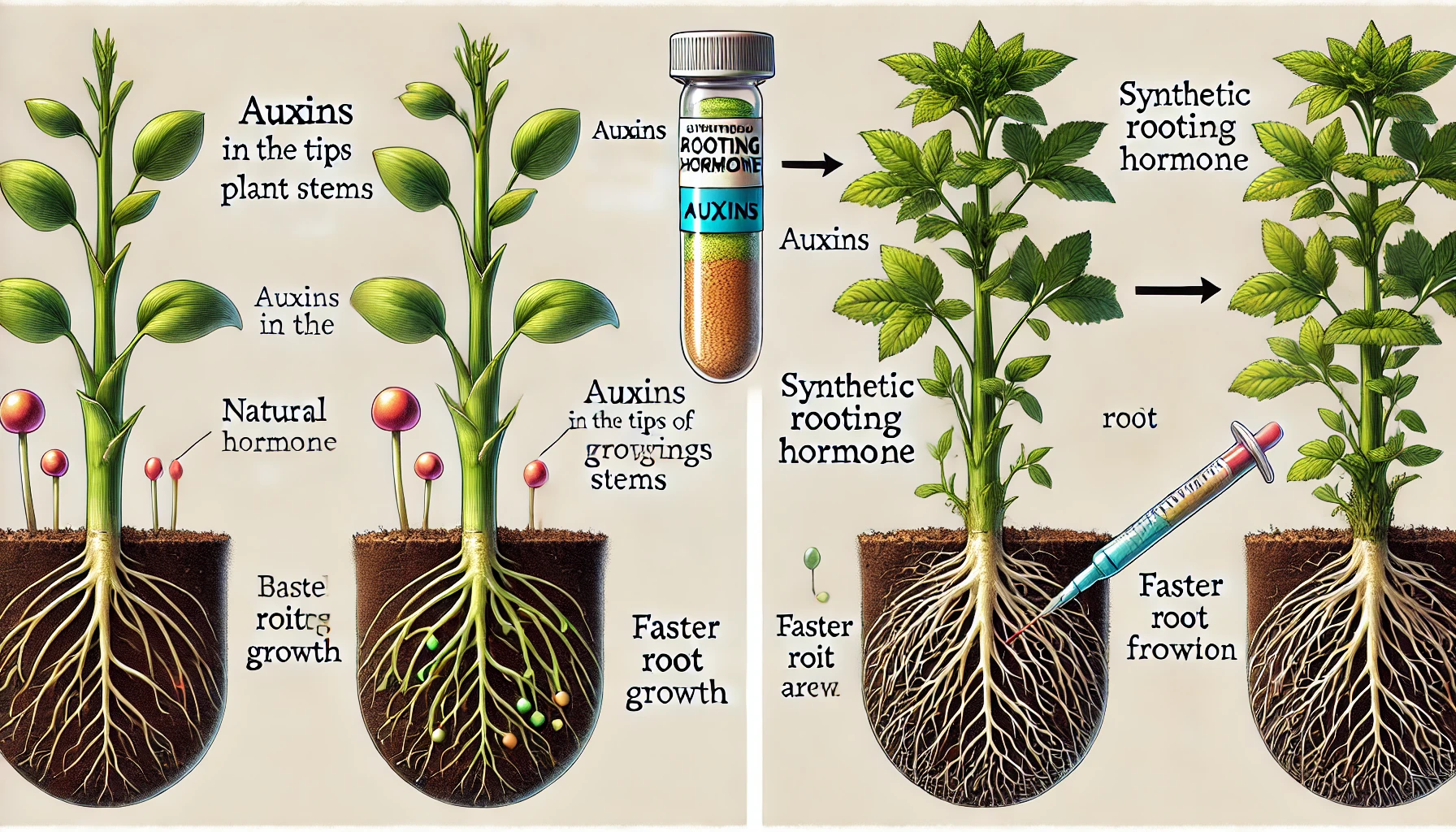
Rooting hormones are synthetic or naturally derived substances that mimic the action of auxins. These hormones are commonly used to speed up the rooting process, especially in cuttings, ensuring they develop strong, healthy roots more quickly. By applying rooting hormone to the base of a cutting, you give your plant a better chance of rooting successfully, especially in conditions where natural auxins might not be enough.
For effective propagation, using a sterile soil for rooting cuttings is essential to avoid contamination and encourage the rooting process. Rooting hormones are typically applied to the cut end of the plant before placing it in sterile soil, providing a strong foundation for fast and healthy growth.
The Role of Auxins and Rooting Hormones in Root Growth
When propagating vining plants from cuttings, one of the key factors that influence successful root development is the presence of auxins—a type of plant hormone. Auxins are naturally occurring chemicals that promote root formation and are essential for the growth of new roots from plant cuttings. While plants produce auxins on their own, you can boost the rooting process by using rooting hormones.
Rooting hormones are synthetic or natural compounds that mimic the action of auxins. They help to stimulate faster root growth by encouraging the plant’s cells to develop into roots. These hormones are especially useful for cuttings that may be slow to root naturally, like certain woody plants or those with tougher stems.
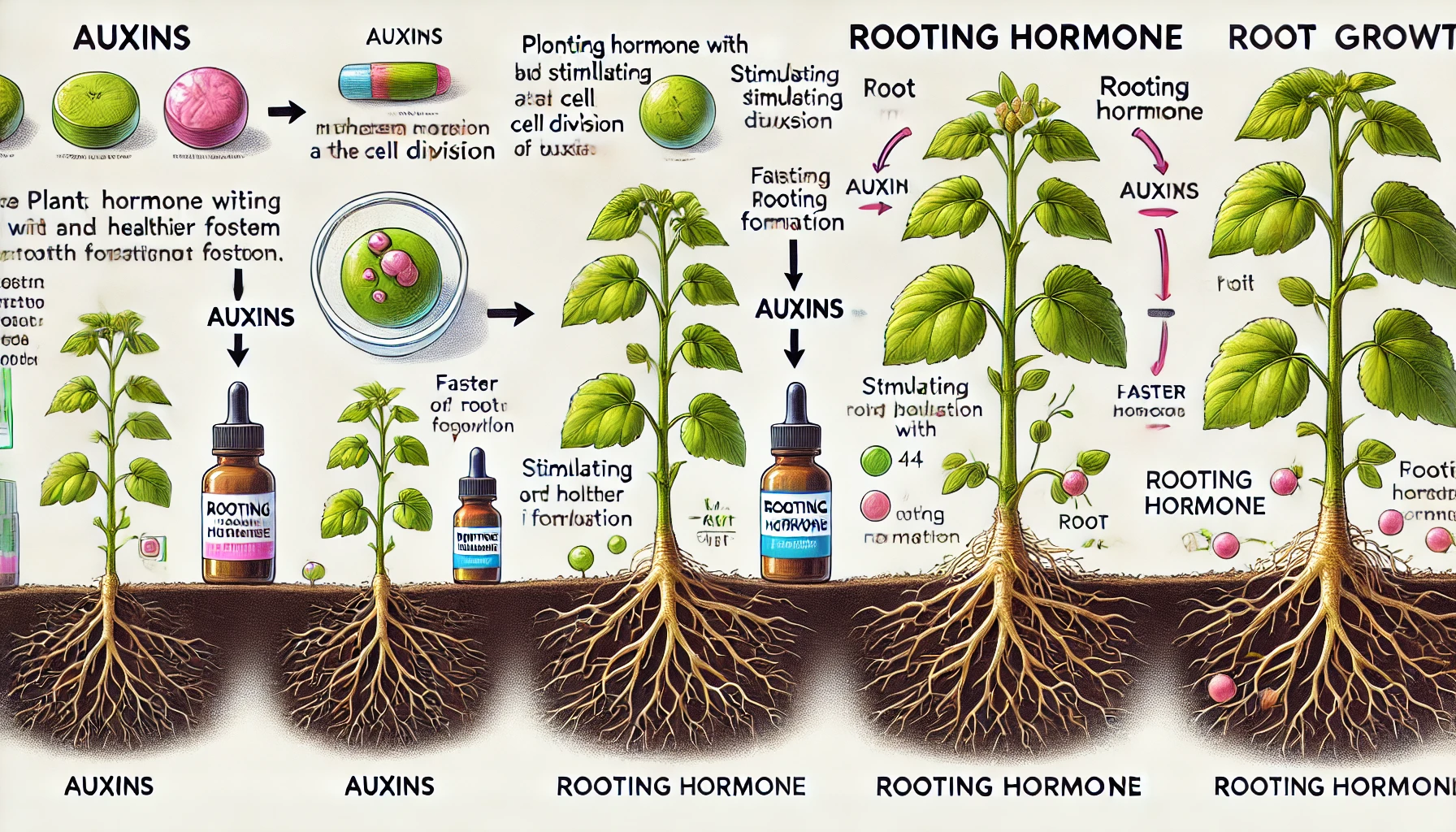
How Rooting Hormones Work:
- They encourage cell division at the base of the cutting.
- Speed up the formation of root tissue.
- Improve the overall success rate of rooting, leading to healthier plants.
Using a rooting hormone is as simple as dipping the cut end of your stem into the powder or liquid before planting it in sterile soil for rooting cuttings. This small step can make a big difference in the speed and health of root development.
By applying rooting hormones, you can significantly reduce the time it takes for your cuttings to root and increase the chances of successful propagation, ensuring you get lush, thriving vining plants.
How to Use Auxins and Rooting Hormones Effectively
Rooting hormones, often containing auxins, are a powerful tool for encouraging faster and stronger root growth when propagating vining plants from cuttings. Auxins are naturally occurring plant hormones that promote cell growth and help form new roots. Using rooting hormones effectively can increase the success rate of your cuttings and speed up the rooting process.
1. Choosing the Right Rooting Hormone
Rooting hormones come in various forms: powders, gels, and liquids. The most commonly used form is a powder, but all work well if applied correctly. Select a hormone based on your plant type and the rooting speed you desire.
- Powder Form: The most popular and economical choice, easy to apply, and works well for most vining plants.
- Gel Form: Offers a cleaner application and can reduce mess, making it ideal for indoor propagation.
- Liquid Form: Best for soaking cuttings, but typically requires more precision in application.
2. Application Method
To use rooting hormone, follow these steps:
- Prepare the Cutting: Trim your cutting just below a node (where leaves are attached), making sure it’s clean and healthy.
- Dip the Cut End: Gently dip the cut end of your cutting into the rooting hormone. Be sure to cover just the base of the stem where roots will form, avoiding excess hormone.
- Shake Off Excess: Gently tap or shake off any excess powder to avoid clumping and ensure an even application.
- Plant the Cutting: Place the hormone-treated cutting in sterile soil for rooting cuttings or water, depending on your preferred propagation method.
3. Why Use Rooting Hormone?
- Faster Rooting: Rooting hormone accelerates root formation, leading to quicker, healthier plants.
- Stronger Roots: By stimulating root growth, it helps create a solid foundation for the plant, making it more resilient.
- Increased Success Rate: Especially beneficial for harder-to-root plants, ensuring more cuttings survive and thrive.
4. When to Avoid Rooting Hormone
While rooting hormone can be very effective, there are times when you might not need it:
- Certain Plants Don’t Require It: Some vining plants like pothos or ivy root easily without hormone.
- If You’re Propagating in Water: For water propagation, rooting hormone may not be necessary, as roots can develop naturally in the water.
Using auxins and rooting hormones properly ensures the fastest, healthiest rooting for your vining plants. By following these simple steps and applying the hormone carefully, you can improve your propagation success and enjoy thriving plants sooner.
The Importance of Sterile Soil for Rooting Cuttings
When propagating vining plants from cuttings, using sterile soil for rooting cuttings is crucial for ensuring healthy growth and successful rooting. Here’s why it matters:
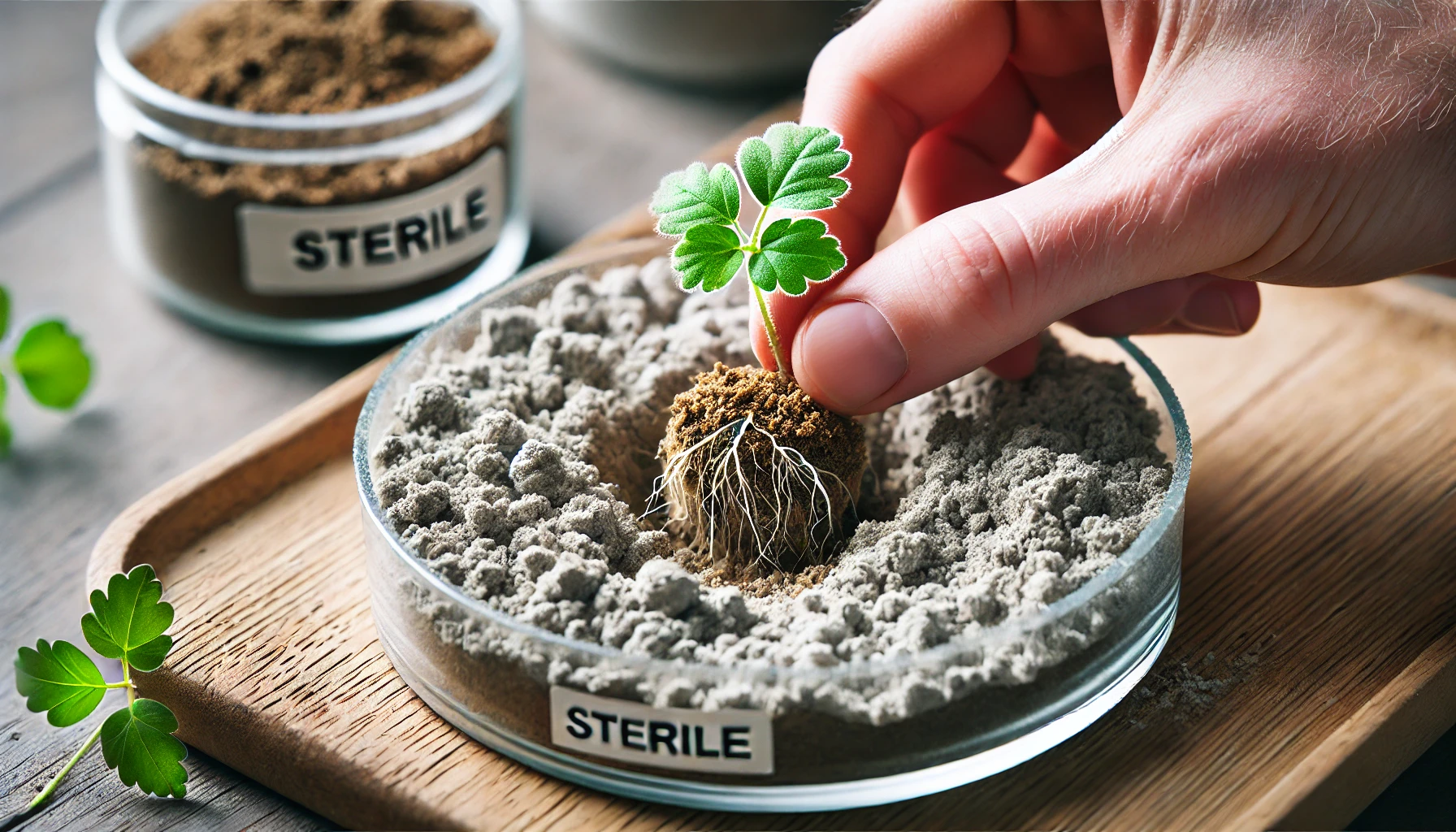
- Prevents Disease
Sterile soil is free from harmful pathogens, fungi, and bacteria that can infect your cuttings and hinder root development. Without sterile soil, your cuttings are more likely to rot or become infected, leading to failure in propagation. - Encourages Strong Roots
Clean, sterile soil creates an ideal environment for roots to form. It provides the right balance of nutrients and moisture without the competition from harmful microorganisms, allowing your cuttings to establish roots more quickly. - Minimizes Contamination
Even a small amount of contaminated soil can introduce pests and diseases that spread quickly. By using sterile soil, you reduce the risk of introducing these threats into your propagation process. - Supports Faster Rooting
Sterile soil is typically lighter and well-draining, which helps cuttings retain moisture while avoiding waterlogging. This promotes healthier and faster root development, ensuring your new plants grow strong and vibrant.
Tips for Maximizing Rooting Success
Successfully rooting vining plant cuttings depends on a few key factors. By following these expert tips, you can maximize your chances of fast, healthy root growth:
Use Sterile Soil for Rooting Cuttings
Start with clean, well-draining soil. Sterile soil for rooting cuttings prevents disease and promotes healthier roots. Avoid using garden soil, as it can carry pathogens.
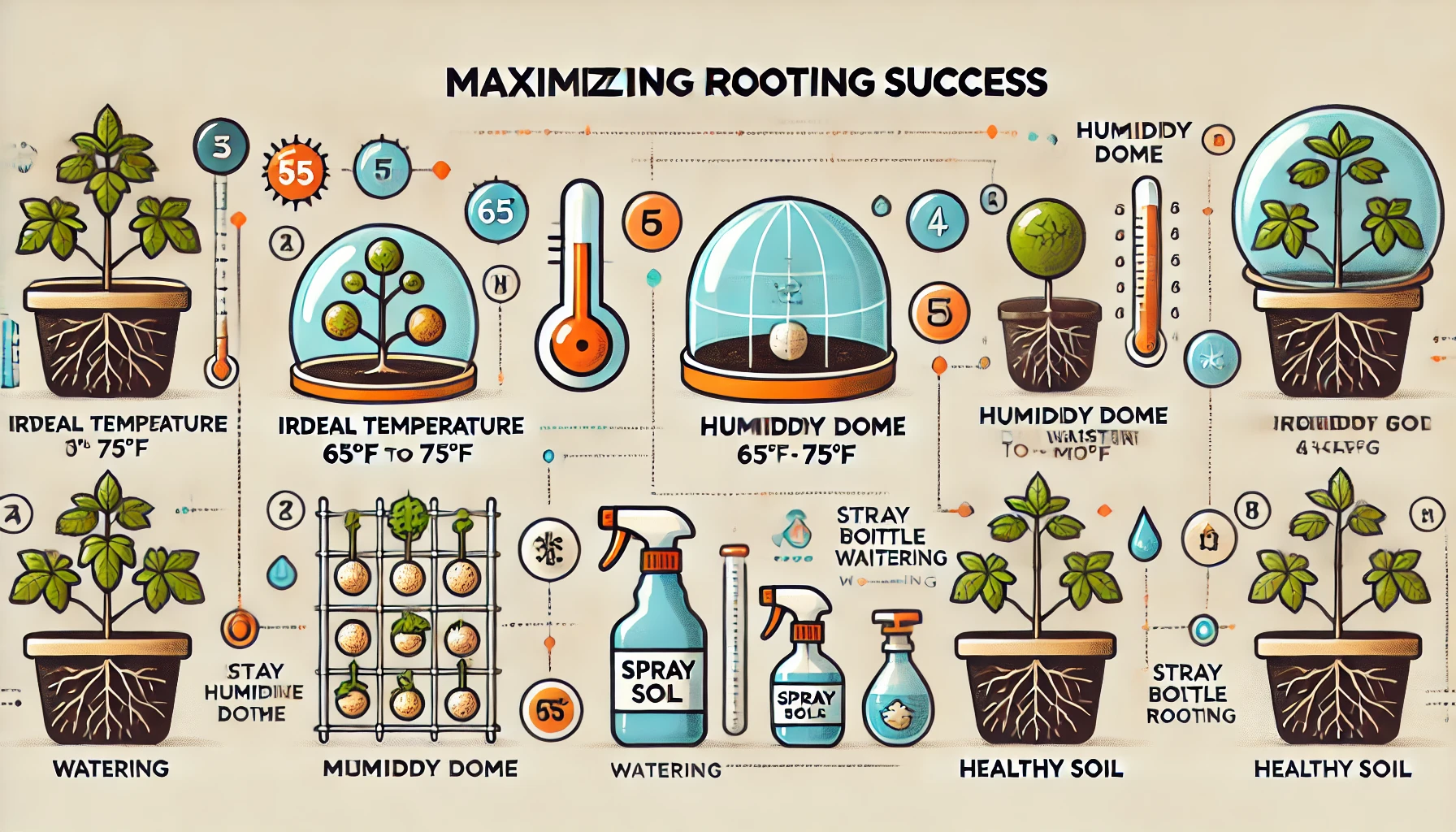
Maintain Ideal Temperature and Humidity
Vining plants root best in temperatures between 65-75°F (18-24°C). Keep the humidity high around the cuttings by covering them with plastic bags or humidity domes. This simulates a greenhouse environment, helping roots form more quickly.
Ensure Proper Lighting
Place cuttings in bright, indirect light. Direct sunlight can cause the cuttings to dry out. Too little light, however, may slow down the rooting process. A spot with filtered sunlight works best.
Water Carefully
Keep the soil slightly moist, but not soggy. Overwatering can lead to rot, so always check the soil before adding water. Using a spray bottle can help maintain moisture without over-saturating the soil.
Check for Root Growth Regularly
After a few weeks, gently tug on the cuttings to see if roots are developing. If there’s resistance, your cuttings have rooted. This step prevents premature transplanting and ensures healthy roots.
By following these simple yet effective steps, you’ll increase your chances of successfully propagating vining plants quickly, leading to healthier, thriving plants.
Troubleshooting Common Rooting Issues
While propagating vining plants is relatively straightforward, there are a few common issues that may arise during the rooting process. Understanding these problems and how to fix them can help ensure healthy, thriving plants.
1. Slow or No Rooting
- Cause: Low temperatures, insufficient humidity, or poor soil quality can slow down root development.
- Solution: Ensure your cuttings are kept in a warm, bright spot with indirect light. Use sterile soil for rooting cuttings to avoid contamination. Maintain humidity by covering the cuttings with a plastic bag or humidity dome. Be patient – some plants take longer than others to root.
2. Yellowing Leaves or Wilting
- Cause: Overwatering or underwatering can cause leaves to yellow or wilt. Root rot can occur if the soil is too soggy.
- Solution: Check your soil moisture regularly and only water when the top inch of soil feels dry. Ensure your container has drainage holes to prevent water from accumulating at the bottom. Remove any yellow leaves to reduce stress on the plant.
3. Mold or Fungal Growth
- Cause: Excess moisture and poor air circulation can lead to mold or fungal issues, especially in humid environments.
- Solution: Reduce humidity if it’s too high and increase air circulation by opening the plastic cover for short periods. Remove any affected cuttings to prevent mold from spreading. Using sterile soil for rooting cuttings can also help prevent fungal infections.
4. Brown Tips on Leaves
- Cause: Exposure to direct sunlight or dry air can cause the tips of leaves to burn.
- Solution: Move the cuttings to a location with bright but indirect light. Increase humidity around the plants if the air is too dry, especially in winter.
5. Pests
- Cause: Aphids, spider mites, or mealybugs can infest your cuttings and affect their health.
- Solution: Inspect cuttings regularly for pests. If you find any, wash the cuttings with water or use an insecticidal soap. Natural remedies like neem oil can also help control pests without harming the plants.
By identifying and addressing these common rooting issues early, you can give your vining plants the best chance to thrive and grow quickly. Keep these tips in mind, and you’ll be well on your way to successful propagation.
In conclusion, using auxins and rooting hormones effectively can significantly boost the success rate of plant propagation by promoting faster and healthier root development. By understanding how these growth regulators work and applying them properly, you can ensure that your cuttings form strong, resilient roots. Remember, while rooting hormones are an invaluable tool, pairing them with sterile soil for rooting cuttings is essential to prevent disease and promote optimal growth conditions.
Whether you’re an experienced gardener or just starting with propagation, these techniques will help you achieve better results and a more abundant plant collection. With the right knowledge, patience, and attention to detail, you’ll be able to grow your plants from cuttings with confidence. Happy propagating, and may your plant roots grow strong and plentiful!
Frequently Asked Questions(FAQ)
What are auxins and how do they relate to rooting hormone usage?
Auxins are a class of plant hormones that regulate growth and development. In rooting hormone products, synthetic or natural auxins (like IAA, IBA, or NAA) are used to stimulate root formation in plant cuttings, enhancing success in plant propagation.
Are auxins naturally found in plants?
Yes, auxins such as indole-3-acetic acid (IAA) occur naturally in plants and are primarily produced in shoot tips. They play a key role in root initiation, stem elongation, and overall plant growth.
What types of rooting hormones contain auxins?
Rooting hormones come in three main forms: gel, powder, and liquid. Most contain synthetic auxins like Indole-3-butyric acid (IBA) or Naphthaleneacetic acid (NAA) to promote faster and stronger root development in cuttings.
How should rooting hormone be applied to cuttings?
Dip the base of the cutting into water, then into the rooting hormone (gel, powder, or liquid). Tap off excess and plant the cutting in moist growing medium. Avoid contamination by using a separate container for dipping.
Can I use homemade rooting hormone instead of commercial auxins?
Yes, some gardeners use natural alternatives like willow water or honey. While these may contain mild rooting compounds, commercial rooting hormones with auxins are more reliable for consistent root development.
How long does it take for roots to grow after using rooting hormone?
Root development usually begins within 1 to 3 weeks, depending on the plant species and environmental conditions. Auxins in rooting hormone significantly speed up the rooting process compared to untreated cuttings.
Are there any risks of using too much rooting hormone?
Yes, overuse of rooting hormone can damage cuttings or inhibit rooting altogether. Always follow the manufacturer’s dosage instructions to avoid toxicity.
Which plants benefit most from auxins and rooting hormone usage?
Woody plants, semi-hardwood cuttings, and difficult-to-root species like roses, camellias, and citrus benefit greatly from rooting hormones. Soft herbaceous cuttings may root without hormone but can still benefit from its use.

